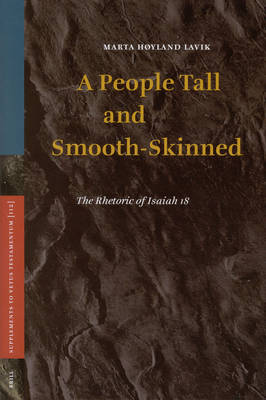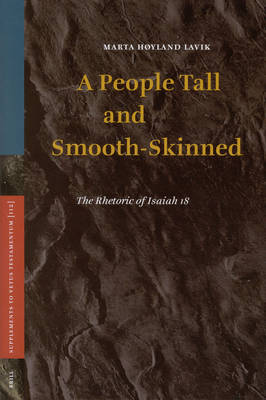
- Afhalen na 1 uur in een winkel met voorraad
- Gratis thuislevering in België vanaf € 30
- Ruim aanbod met 7 miljoen producten
- Afhalen na 1 uur in een winkel met voorraad
- Gratis thuislevering in België vanaf € 30
- Ruim aanbod met 7 miljoen producten
Zoeken
€ 296,45
+ 592 punten
Omschrijving
This volume delivers an analysis of the persuasive artistry of Isaiah 18, i.e. how Isa 18 is designed in order to persuade an ancient audience. The analysis is pursued from four angles: the textual design, the motifs, the rhetoric of the text and finally, it is shown how the various strophes within each stanza of Isa 18 relate to one another.
The present analysis demonstrates that Isa 18 is an example of Hebrew rhetoric, and that the text can be read as a coherent whole - even though the majority of scholars analysing Isa 18 have found this chapter confusing. In this volume, it is argued that Isa 18 is shaped in a confusing way in order to make the audience believe that someone else is judged (the Cushites, 18:1-2.7), and not themselves.
This volume sheds new light on the understanding of and old text, and the volume is important for exegetes interested in the persuasive artistry of Isa 18.
The present analysis demonstrates that Isa 18 is an example of Hebrew rhetoric, and that the text can be read as a coherent whole - even though the majority of scholars analysing Isa 18 have found this chapter confusing. In this volume, it is argued that Isa 18 is shaped in a confusing way in order to make the audience believe that someone else is judged (the Cushites, 18:1-2.7), and not themselves.
This volume sheds new light on the understanding of and old text, and the volume is important for exegetes interested in the persuasive artistry of Isa 18.
Specificaties
Betrokkenen
- Auteur(s):
- Uitgeverij:
Inhoud
- Aantal bladzijden:
- 296
- Taal:
- Engels
- Reeks:
- Reeksnummer:
- nr. 112
Eigenschappen
- Productcode (EAN):
- 9789004154346
- Verschijningsdatum:
- 14/12/2006
- Uitvoering:
- Hardcover
- Formaat:
- Genaaid
- Afmetingen:
- 167 mm x 245 mm
- Gewicht:
- 689 g

Alleen bij Standaard Boekhandel
+ 592 punten op je klantenkaart van Standaard Boekhandel
Beoordelingen
We publiceren alleen reviews die voldoen aan de voorwaarden voor reviews. Bekijk onze voorwaarden voor reviews.











